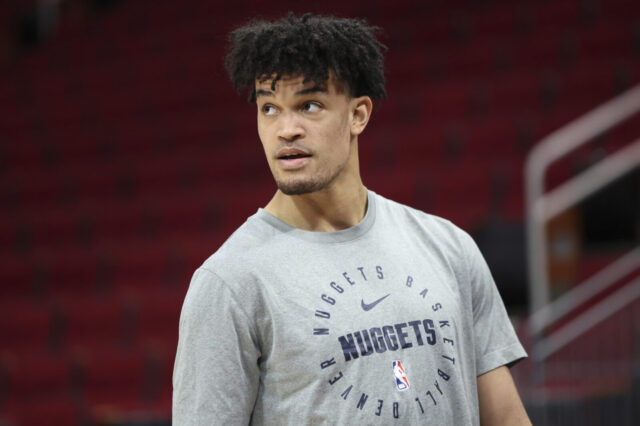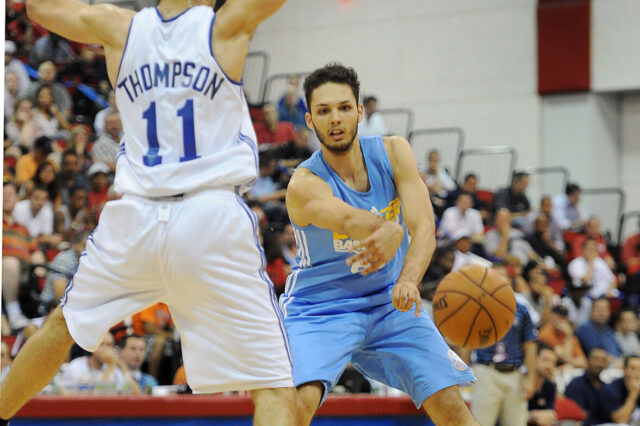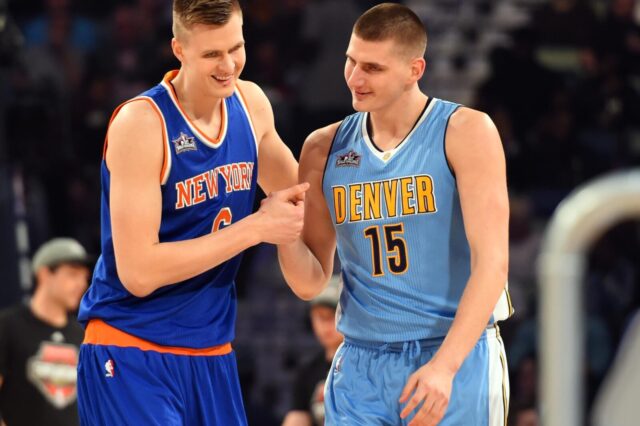Barring any major setback, the NBA is scheduled to resume in Orlando next month and hopefully finish out the 2019-2020 season. Much has been said and speculated about how the league is preparing to effectively create a “bubble” in which 22 teams will live and operate in order to mitigate the effects of Covid-19, and as new details emerge on procedural processes we are gaining greater insight into what NBA life in Orlando will be like.
The league’s 100-page handbook also spells out specifications on how the games themselves will be handled, covering everything from who is allowed in the arena and mask usage to media protocol and ball sanitation.
One of the biggest unknowns about Orlando, however, is the in-game experience and the quality of the games themselves, especially considering there will be no fans in attendance. By and large the absence of a crowd (and the subsequent loss of home court advantage) will be the biggest change about the Orlando tournament compared to regular basketball.
The reality of this isn’t lost on the players. When recently asked about not having any kind of home-court advantage, Jamal Murray said, “That’s one of the big game-changers for everybody, me included, just because the fans get me going, I get the fans going and it’s a back-and-forth energy.” Laughingly, it was reported by Los Angeles-based ESPN journalist Dave McMenamin that some top-seeded teams were pushing for alternative ways to still have some sort of home-court advantage, including by allowing one player on the home team to be granted seven fouls instead of six.
The NBA is also looking for workarounds to make the in-game experience as realistic as possible. One idea involved using NBA 2k sounds to re-create crowd noise. A recent interview with Dallas Maverick’s owner Mark Cuban also suggests that other technology could be used, specifically “apps that allow fans to push noise they make at home into the arena.”
While such ideas seem gimmicky, unfortunately they represent the reality that this year’s playoffs will be a completely new and unknown experience. No amount of virtual crowd noise will make up for an empty stadium.
This leads to an obtuse follow-up question: will playing basketball in front of no fans affect the actual performance of the players and teams involved?
Interestingly, this question has been asked before, over 30 years ago, during a different epidemic.
In 1989, a measles outbreak on Siena’s campus forced a quarantine that resulted in a number of college basketball games between Siena and Hartford to be played without spectators. Given the rarity of the situation, psychologists James Moore and Jody Brylinsky took advantage of the opportunity to study the effect of crowd absence on performance in a natural setting (that is, not in a controlled experiment where the forced absence of a crowd ).
Published in 1993, the study itself basically involved comparing team box scores on total points, field goal percentage and free throw percentage for games played without a crowd to games where spectators were present. While there are certainly limitations that come to mind (small sample size being chief among them), the results are intriguing.
The intuitive hypothesis would be that when a crowd is present, player performance is improved (think of Jamal Murray – “the fans get me going”). However, the study actually found the opposite was true for the 11 games analyzed.
According to the study, both teams showed improved performance under the no spectator condition. For example, Siena scored an average of 76.25 points in front of spectators and 86.2 without. Hartford’s scoring average also went up, from 64.29 to 71.25. Similar results were found for both field goal and free throw percentage for both teams. Based on the data points and since both teams were studied independently, the researchers concluded that there is support for improved performance under a no spectator condition.
One interesting theory for why this could be the case is “Evaluation Apprehension.” The idea is that when we work in the presence of others, concern over what they think of us will impair our performance. For basketball players, this could be the pressure to perform in front of a home crowd, especially when the stakes are high like in the NBA playoffs.
Most would probably scoff at that idea. Successful NBA players are wired to perform under the very close scrutiny of not only the crowd, but also coaches, scouts, executives and the media. Draymond Green’s “There are 82-game players and there are 16-game players” adage also comes to mind and certainly there are countless examples of both kinds of player.
But the results of the Siena-Hartford study and theory of Evaluation Apprehension don’t mean that in front of crowds NBA players can’t or don’t already perform well – we know that’s not the case. The NBA playoffs are a prime example of crowning athletic achievement. It merely suggests that perhaps in the absence of a crowd, players could play even better.
Last year in their playoff debuts Nikola Jokic averaged 25.1 points, 13.0 rebounds and 8.4 assists and Jamal Murray put up 21.3, 4.4 and 4.7. It’s hard to believe that wouldn’t be the case again this season just based on a year of development (and a Jokic beach bod), but now extrapolate the aforementioned theories to Jokic, Murray and players like LeBron James, Giannis Antetokounmpo, James Harden and Kawhi Leonard and it’s hard not to get excited about the possibility of improved performance from the world’s best.
Will that be the case in Orlando 2020? The reality is we just don’t know. There are so many differing factors that will come into play and frankly so many other things to worry about.
But this also presents a fascinating opportunity for some to continue the study that Moore and Brylinsky started. Not only will there be a more reputable sample size with 100+ games to be played without a crowd present, but basketball statistics are also light years ahead of the paper box scores from the 1980’s. A potential treasure trove of data could be out there in this regard.
Moore and Brylinsky wittingly anticipated the day more analysis could be done, knowing that it would take certain extraordinary conditions to be able to replicate such a study:
“Future replications will have to wait until the next misfortunes. Data will again be ex-post facto and likely small in number. However, an accumulation of such replications, especially if there are consistencies in findings, will advance the knowledge base. It will probably never be possible to conduct experimental studies to examine the absence of crowds (unintended absence) in the natural setting. Thus, opportunities similar to the one described in this paper should be pursued. It is in this sense that we offer our findings as one basis to refer to when similar situations arise.
With this in mind we have our measles vaccinations and are eagerly awaiting the next opportunity.”
Perhaps that time has now come.


